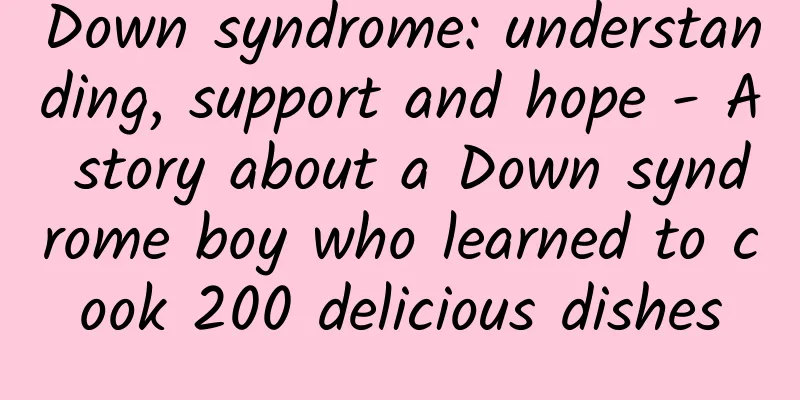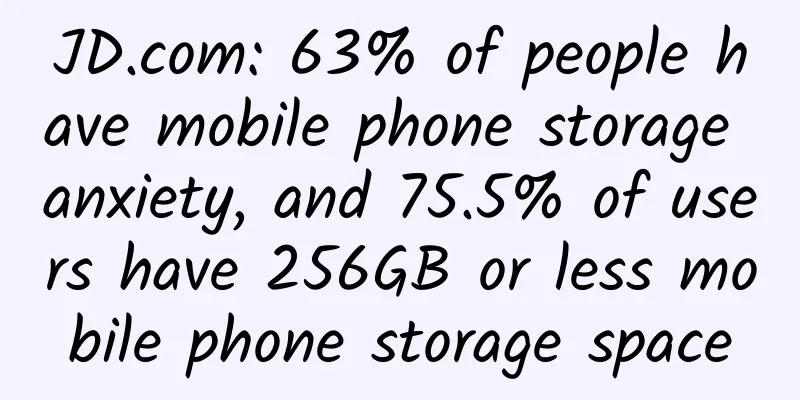Down syndrome: understanding, support and hope - A story about a Down syndrome boy who learned to cook 200 delicious dishes

|
In today's era of rapid information dissemination, a story about a 16-year-old boy with Down syndrome is like a beam of warm light, illuminating people's attention to this special group of people with Down syndrome. This story happened in Guiyang, Guizhou. With his tenacious love and patience, Mr. Tian insisted on teaching his son Xiaotian with Down syndrome to read, write, shop and do housework. What's more amazing is that he also accompanied his son to learn to cook more than 200 dishes. Recently, Xiaotian has mastered the skill of taking the subway. Mr. Tian's original intention was simple and great. He hoped to plan the future for his son as early as possible so that he could live a better life with his own abilities in the future. This story is not only a story of one family's struggle, but also an opportunity to trigger social thinking, allowing us to have a deeper understanding of Down syndrome and how to give better understanding and support to this group. What is Down syndrome? Down syndrome, as a complex genetic disease, has its own unique medical causes. It is also called trisomy 21, which is caused by abnormalities in the division of reproductive cells. Normally, the embryo should have two chromosomes 21, but the embryo of a Down syndrome patient has three chromosomes 21. This seemingly small difference in the number of chromosomes has caused a series of serious consequences. From the perspective of physical characteristics, people with Down syndrome have some obvious similar facial features. Their eyes are usually of a special shape, with wide distance between them, their noses are relatively flat, and their tongues may often stick out of their mouths. These facial features make them easy to identify in the crowd. In addition to physical features, intellectual disability is a major challenge faced by people with Down syndrome. The intellectual development level of patients is usually significantly lower than that of their peers, which makes them have great difficulties in learning and cognition. Whether it is simple reading and writing, or understanding various things in daily life, it takes more effort and time than ordinary people. Growth retardation is also an important manifestation of Down syndrome. In terms of physical development, patients may be shorter than their peers and their weight gain may be slower. Their motor development may also be affected. For example, the time it takes to learn basic motor skills such as walking and running may be delayed. In addition, patients with Down syndrome may also face a variety of health problems. Their heart, digestive system, immune system, etc. may have defects to varying degrees. For example, congenital heart disease is more common in patients with Down syndrome, which brings great risks to their physical health. How to diagnose Down syndrome? Understanding the diagnostic methods for Down syndrome is crucial for early detection and intervention. Currently, there are two main diagnostic pathways: prenatal screening and chromosome analysis after birth. Prenatal screening is a test method performed before the fetus is born. Among them, amniocentesis and chorionic villus sampling are commonly used methods. Amniocentesis is to insert a thin needle into the abdomen of the pregnant woman to extract a sample of amniotic fluid for testing. Chorionic villus sampling is to obtain placental villus tissue for analysis in early pregnancy. These methods can detect whether the fetus has chromosomal abnormalities, so as to determine whether it has Down syndrome at an early stage. However, although prenatal screening can provide important diagnostic information, it also has certain risks. For example, amniocentesis may cause a slightly increased risk of miscarriage in pregnant women, and chorionic villus sampling may also cause certain harm to the fetus. Therefore, when choosing a prenatal screening method, pregnant women need to carefully weigh the pros and cons according to their own circumstances under the guidance of a doctor. Chromosome analysis after birth is performed by collecting blood samples from patients. This method is relatively safe and less harmful to patients. By analyzing the chromosomes in the blood samples, it is possible to accurately determine whether a baby has Down syndrome. Whether it is prenatal screening or chromosome analysis after birth, they provide important basis for the diagnosis of Down syndrome, allowing us to detect patients as early as possible and provide possibilities for subsequent intervention and treatment. How to intervene in Down syndrome early? Although there is currently no medical cure for Down syndrome, early intervention and education play an important role in improving the quality of life of patients. In terms of early intervention, professionals will develop a series of training plans to meet the special needs of patients with Down syndrome. For example, in terms of motor skills training, various games and activities will be used to help patients improve their muscle strength and coordination, and promote their learning of basic motor skills, such as walking, running, and grabbing objects. In terms of language skills training, methods such as repetition and demonstration will be used to guide patients to speak and improve their language expression ability. In terms of cognitive skills training, simple teaching aids and games will be used to help patients recognize basic concepts such as colors, shapes, and numbers. Education is also crucial for people with Down syndrome. Special education institutions provide these patients with a special learning environment and curriculum. In special education schools, teachers will develop personalized teaching plans based on the different ability levels of students. They will use more intuitive and visual teaching methods to help students better understand knowledge. For example, when teaching mathematics, physical teaching aids may be used to allow students to learn addition and subtraction through practical operations. When teaching Chinese knowledge, pictures, stories, etc. may be used to help students recognize Chinese characters and understand the content of the article. Through special education, people with Down syndrome can acquire certain knowledge and skills and improve their self-management ability and social adaptability. How can we better understand and support this group? Society's support for people with Down syndrome is multi-dimensional, covering special education, vocational training, social services, and medical support. Special education is the foundation, which provides patients with the opportunity to learn knowledge and skills, as mentioned above. Vocational training is to help patients acquire certain vocational skills in the future and realize their self-worth. For example, some areas will offer some simple hand-made courses for patients with Down syndrome, such as making handicrafts and weaving. Through these courses, patients can learn a craft and may earn income through their own labor in the future. In terms of social services, all sectors of society need to provide more convenience and help for patients with Down syndrome and their families. For example, in the design of public facilities, the special needs of patients should be taken into account, such as the setting of barrier-free passages should be more complete, and public toilets should have facilities suitable for patients. At the same time, the community should also actively organize some activities to encourage patients to participate in social interactions and improve their sense of social integration. Medical support is also indispensable. Because patients with Down syndrome have multiple health problems, they need regular physical examinations and treatment. Hospitals should provide these patients with more professional medical services and develop personalized treatment plans for their special conditions. For example, for patients with congenital heart disease, hospitals should have the corresponding surgical and treatment capabilities to provide patients with timely and effective treatment. Many countries and regions have organizations and programs that provide assistance to Down syndrome patients and their families. These organizations and programs play an important role in the growth of patients. They provide patients with a variety of resources and support to help them better integrate into society and realize their self-worth. Down syndrome is a complex medical and social issue. Through an in-depth understanding of the growth story of a 16-year-old boy with Down syndrome, we have a clearer understanding of the challenges faced by people with Down syndrome and the support they need. We should work together from multiple perspectives such as medicine, education, and society to create a more understanding, inclusive, and supportive environment for this group so that they can enjoy equal opportunities for life and development. Only in this way can we truly help people with Down syndrome realize their life value and let them have their own place in this world. |
<<: [Medical Q&A] Are there any common sites for breast cancer to occur?
>>: [Medical Q&A] Are smoking and drinking the “invisible drivers” of breast cancer risk?
Recommend
Can wolfberry soak honeysuckle drink? What are the benefits of drinking honeysuckle and wolfberry soaked in water?
Honeysuckle is a common plant in our lives. Peopl...
Which is more harmful: staying up late to play with your phone for 10 hours or staying up late to work 10 hours?
Source: Dr. Curious...
Severe urinary frequency in late pregnancy
The late pregnancy is a very important period. Af...
Emergency safety science popularization - cardiopulmonary resuscitation: the golden four minutes, the key to protecting life
In an emergency, every second matters. Cardiopulm...
Lower abdomen bloating like gas after sex
Because men play a leading role in sexual life, a...
Can I test for pregnancy on day 8?
Early pregnancy symptoms usually take more than t...
How to calculate menstruation after hysteroscopy
In recent years, many female friends have suffere...
Essential oil massage for breast hyperplasia
Don't worry if you suffer from breast hyperpl...
Introduction to multiple breast nodules
Breasts exist in everyone's body, and the dis...
Green stool in pregnant women
Pregnant women will pay great attention to their ...
How to remove soft contact lenses correctly
This is the 4209th article of Da Yi Xiao Hu Highl...
Normal fasting blood sugar levels during pregnancy
Pregnant women need to do a lot of tests during p...
What should I do if my menstruation keeps coming early?
Some women have problems with their menstruation,...
How long does it usually take for ovulation to occur after ovulation pain?
Everyone knows that women are more likely to conc...
Will delaying my period affect my pregnancy?
Nowadays, many women are rather careless, especia...









